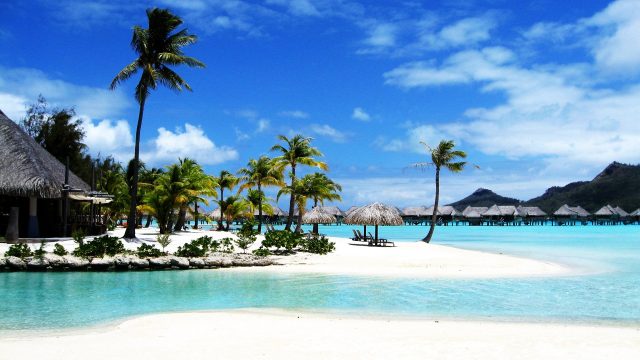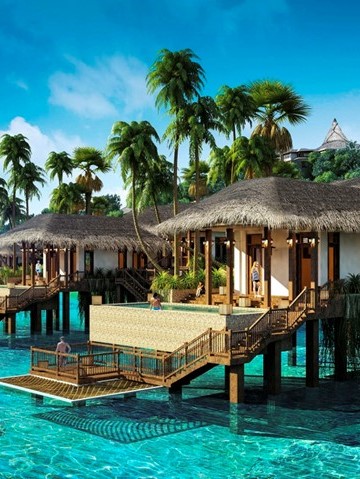Indochina Heritage Sites
June 6th 2019VIETNAM
There are three out of eight UNESCO World Heritage Sites found in Vietnam you absolutely must not miss.
1.The Complex of Hue Monuments
In the central city of Hue you'll find the last vestiges of the Nguyen Dynasty. Here, against a backdrop of forested hills with a meandering river at their feet, the Nguyen emperors erected administrative offices, military headquarters, palaces, temples and even their own tombs.
Vietnam’s feudal capital was strategically built along the banks of the Perfume River, with easy access to the sea. Taking inspiration from Beijing’s Forbidden City, the structures within the citadel were carefully laid out to be in cosmological alignment with the five elements, cardinal points and colours.
Take a leisurely amble around the complex and watch Imperial Vietnam come to life in full colour. Imposing statues, priceless treasures and intricate mosaics wait around every corner. Although the Nguyen Dynasty ended in 1945, the symbolic significance of the Hue Monuments–once the political, cultural and religious heart of Vietnam–still echoes today.

2. Hoi An Ancient Town
Hoi An was once a bustling trading port, welcoming merchants from far across the seas. Between the 15th and 19th centuries, Chinese, Japanese and Europeans settled along the banks of the winding Thu Bon River. Today, 30 hectares of this ancient town is preserved as a UNESCO Cultural Heritage Site.
Hoi An’s unique fusion of cultural influences reveals itself within its narrow streets. Weathered shop-houses squeeze shoulder-to-shoulder alongside ancestral homes, their tiled roofs decorated in exotic wood carvings. Tucked away from the old ferry quay, you’ll find an open market, pagodas and a timber bridge that once connected the town's Japanese and Chinese communities. Hoi An is even better in the evenings, when the faded streets glow in the light of thousands of lanterns.

3. Ha Long Bay
It’s no surprise Ha Long Bay is home to as many legends as it is islands. The name ‘Ha Long’ means ‘descending dragon’ and Vietnamese tell a tale of a dragon that descended from the sky, spitting out thousands of pearls that became the islands and islets we see today.
This spectacular bay and Natural Heritage Site stretches across the Gulf of Tonkin, 165 km from Hanoi. Hidden among more than 1,600 limestone formations, are secret grottoes, sparkling beaches, and jaw-dropping caves. The best way to go is on an overnight cruise. Mornings are for watching the sunrise, practicing tai chi or sightseeing in the caves. Afternoons are spent swimming, kayaking or simply relaxing on the sun deck. Evenings arrive with striking sunsets and soothing sea breeze, and leave behind a sky riddled with stars.
The scenery in the bay is enhanced by the local life that continues in this dream-like setting. Floating villages rest on rafts, children row to school, men fish for a living, and women cook and sell their wares–all in the company of Ha Long’s majestic karsts and emerald waterways.

CAMBODIA
1. Angkor
This is the most popular tourist attraction in Cambodia – it is also a UNESCO World Heritage Site. Angkor Wat, also known as the “City of Temples” is located in Angkor, in the province of Siem Reap. This temple complex features the largest collection of religious monuments in the world. The site measures over 162 hectares and was originally constructed as a Hindu temple for Vishnu by the Khmer empire. But by the end of the 12th century, it was turned into a Buddhist temple. The Angkor Wat temple complex is also considered as the purest example of the Khmer architectural style.

2. Preah Vihear Temple (2008)
This ancient Hindu temple, like the Angkor Wat, was built during the Khmer Empire in Cambodia. It is located atop the Dangrek Mountains in the Preah Vihear province of Cambodia. For years, there was a dispute between Thailandand Cambodia with regards to who owned the temples. The International Court of Justice decided that the temple was indeed part of Cambodia. The temple served as an important edifice of the Khmer spiritual life.

3. Temple Zone Of Sambor Prei Kuk, Archaeological Site Of Ancient Ishanapura (2017)
Cambodia’s newest UNESCO site is a cultural and archaeological site in the Temple Zone of Sambor Prei Kuk. It is located in the province of Kompung Thom and about 176 kilometers from Angkor. This temple complex is now in a ruined state but it was once the heart of the Pre-Angkorian Chenla Kingdom. It served as the capital and central royal sanctuary for the kingdom during the late 6th to the 9th century.
The structures that make up this complex were constructed at different time periods. They mainly used brick for construction although sandstone was also built on certain structures. These temple complex structures also had various features such as octagonal towers, prasats, ponds, reservoirs, lion sculptures, and more.

LAOS
1.Town Of Luang Prabang (1995)
The town of Luang Prabang was recognized into the list of UNESCO World Heritage Sites in Laos since it is the best example of traditional architecture and urban structures in the country. These structures were built by European colonizers during the 19th and 20th centuries. The entire property measures at 820 hectares with a buffer zone of up to 12,560 hectares. The townscape is still well-preserved until today and exemplifies the fusion of two distinct cultural traditions.

2. Vat Phou And Associated Ancient Settlements Within The Champasak Cultural Landscape (2001)
This cultural landscape features Vat Phou Temple complex as its main feature. The landscape itself is over 1,000 years old and expressed the Hindu belief of nature and humanity’s link. From the mountain to the river banks, it follows a geometric pattern of shrines, temples, and waterworks. Two cities located along the banks of the Mekong River are also included in this world heritage site listing.
.png)
3. The Plain of Jars
On 14 MAY 2019, The plain of jars in Phonsavan, Xieng Khuang is recognized as the UNESCO World Heritage Site after the waiting period of 20 years.
The mysterious Jars were carved from sandstone and granite, and their size ranges from around 3.5 metres upwards. They are thought to be more than 2,000 years old. There are several sites with ancient jars in the province, but three sites in Paek district are popular with visitors. The first site is 15 km southwest of Phonsavanh in Paek district and has about 300 jars. The second site is 25 km south of Phonsavanh and contains about 90 jars spread over two hills. The third site is35 km southeast of Phonsavanh and has about 150 jars.
.png)

1.jpg)


.jpg)
.jpg)
.jpg)
.jpg)
.jpg)
.jpg)
_.jpg)
.jpg)
.jpg)
.jpg)
.jpg)
.jpg)
.jpg)